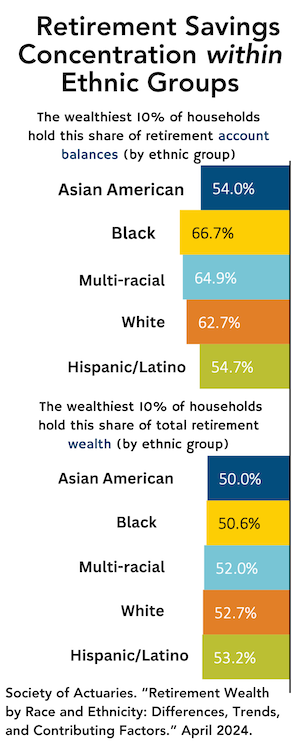Securian buys two more insurers
Securian Financial Group is acquiring American Modern Life Insurance Company (AMLIC) and its subsidiary, Southern Pioneer Life Insurance Company (SPLIC), from American Modern Insurance Group, Cincinnati, OH, the St. Paul-based insurer said in a release. The transaction is expected to close by the end of the year following regulatory approval.
The acquisition will increase the scale of Securian’s credit protection business by 25%. Securian will integrate the acquired business into its St. Paul operations in 2012. American Modern will provide transition services until integration is complete.
AMLIC and SPLIC’s products are similar to those offered by Securian, including credit life and disability insurance and debt protection programs provided to customers of financial institutions.
With more than 50 years of experience in the financial institution market, Securian is the third largest underwriter of credit life and disability insurance in the United States measured in direct written premium according to the Consumer Credit Industry Association (CCIA).
In July, Securian announced its acquisition of Balboa Life Insurance Company and Balboa Life Insurance Company of New York.
New T. Rowe Price bond fund combines higher risk with floor
T. Rowe Price has introduced a Floating Rate Fund (PRFRX) for individual investors. The new no-load mutual fund is T. Rowe Price’s second new bond fund launch this year, after the Emerging Markets Local Currency Bond Fund (PRELX).
The Floating Rate Fund invests in loans to below investment grade companies in search higher yields while providing some protection against interest rate risk.
The minimum initial investment in Floating Rate Fund is $2,500 or $1,000 for retirement plans or gifts or transfers to minors (UGMA/UTMA) accounts. The net expense ratio is estimated to be 0.85%.
The Floating Rate Fund invests in floating rate loans or leveraged loans, which have interest rates that reset either quarterly or monthly, usually to a certain percentage above the London Interbank Offered Rate or LIBOR.
These loans are arranged or syndicated by banks for companies that usually have a significant level of debt relative to equity and whose loans are rated below investment grade in terms of creditworthiness. Often, the loans are used for recapitalizations, acquisitions, leveraged buyouts, and refinancings.
Many floating rate loans also have a LIBOR floor, which means they pay a certain interest rate even if LIBOR falls. In today’s low interest rate environment, LIBOR floors can be especially attractive as they could provide better current income than comparable loans without floors. As of July 31, 2011, about 47% of the loans in the Floating Rate Fund have a LIBOR floor.
“The Floating Rate Fund has more credit risk than a fund investing in investment-grade securities, but it also can be used to manage interest rate risk and provide higher yields,” said Stuart Ritter, a T. Rowe Price planner.
T. Rowe Price manages $2.2 billion in floating rate strategies as of June 30, 2011, and has managed the Institutional Floating Rate Fund (RPIFX) for advisors and institutional investors since its launch in 2008.
Justin Gerbereux and Paul Massaro, managers of T. Rowe Price’s Institutional Floating Rate Fund, will manage the new Floating Rate Fund for individual investors.
“This fund should not replace low-risk bond investments in a diversified portfolio, as it is a sub investment-grade asset class. However, loans usually are at the top of the capital structure, which means that they are among the first to be paid in the event of a default,” said Gerbereux in a release.
A Forrester Research Inc. survey commissioned by T. Rowe Price in the second quarter of 2011 showed that 56% of investors do not understand that the market prices of existing bonds fall when prevailing interest rates rise, and vice-versa.
Zurich appoints Lance Henderson
Zurich has appointed Lance Henderson as head of sales, Corporate Life and Pensions North America for Global Life. Henderson will manage the Corporate Life & Pensions sales force in North America, with responsibility for strategy and marketing initiatives. Henderson, who will be based in Edina, MN and report to Sherif Zakhary, head of Corporate Life & Pensions North America for Global Life, had been Regional Director–Americas for Allianz Group, where he was responsible for managing an employee benefits network in the Americas, Middle East and Africa.
He previously worked with American International Group as deputy director in the International Benefits Division. Mr. Henderson holds a bachelor’s in Business Administration from Valparaiso University and is a Certified Employee Benefits Specialist and a certified member of the Health Insurance Association of America.
The Hartford expands into structured settlement annuity market
The Hartford is re-entering the structured settlement annuity market as part of an ongoing strategy to grow its annuity business, the company announced today.
The Hartford’s Structured Settlement Fixed Annuity, issued by Hartford Life Insurance Co., provides tax-free payouts to people who receive settlements related to a workers’ compensation or personal injury claim.
The Hartford also offers medical underwriting for structured settlements, a capability that not all carriers are able to provide. Because structured settlement recipients sometimes have accident-related injuries that can reduce their life expectancy, medical underwriting can potentially increase their periodic payments.
The Hartford, which has an “A” (Excellent) financial strength rating from A.M. Best, had $7.6 billion in assets under management (AUM) related to structured settlement annuities and $91.3 billion in total annuity AUM as of June 30, 2011.
New York Life reports record immediate annuity sales
New York Life sold over $1 billion worth of fixed immediate annuities in the first half of 2011, the company reported. That was more than any other issuer and represented an increase of 26% over the same period last year. New York Life SPIAs are sold by New York Life agents and third-party distributors.
Sales of New York Life’s affiliated mutual funds (MainStay Funds) are up 62%, totaling more than $9 billion in the first six months of the year, with sales in third-party channels accounting for more than $5 billion of the total. According to Barron’s magazine, MainStay Funds ranked third out of 46 fund families for the 10-year period ended December 31, 2010 − the second year in a row that MainStay commanded the number three spot.
NY Jets and NY Giants to play in new MetLife Stadium
MetLife has announced the signing of a 25-year agreement with the NFL’s New York Giants and New York Jets to name the New Meadowlands stadium in East Rutherford, N.J., MetLife Stadium.
“MetLife Stadium is one of the highest-profile stadiums in the country with more than two million fans attending events every year, and it will host Super Bowl XLVIII in February 2014. As home to the Jets and Giants, it is the only stadium that houses two NFL teams, both of which are ranked among the top-five most valuable franchises in the league and have substantial national fan bases,” the company said in a release.
“MetLife’s influence in the home of the Giants and Jets will be impossible to overlook,” said Steve Tisch, chairman and executive vice president of the New York Giants. “We are pleased to partner with such a well-respected company, and be closely associated with the signature MetLife assets.”
The MetLife Stadium agreement makes MetLife the official insurance company of the Jets, Giants and the stadium complex, and includes interior and exterior branding on the venue. Specific elements of the agreement include: naming rights to the stadium; 120,000 square feet of branded space at the main west entrance; four illuminated signs on the exterior of the building; four inner-bowl signs; and TV, radio, print and online media opportunities.


 In India, for instance, P&D has been involved in a project where an NGO, the DHAN Foundation, has been collecting small pension premiums, which are being invested in government bonds by the Life Insurance Corporation of India, a $300 billion government-owned insurer.
In India, for instance, P&D has been involved in a project where an NGO, the DHAN Foundation, has been collecting small pension premiums, which are being invested in government bonds by the Life Insurance Corporation of India, a $300 billion government-owned insurer.
 RIJ spoke with Walter (right) and one of his associates, Alexandra Orozco, at their offices in Guatemala City by Skype telephone earlier this summer. In September, Redcamif will begin its pilot micro-pension project, hoping to enroll 12,500 people in three years.
RIJ spoke with Walter (right) and one of his associates, Alexandra Orozco, at their offices in Guatemala City by Skype telephone earlier this summer. In September, Redcamif will begin its pilot micro-pension project, hoping to enroll 12,500 people in three years.
